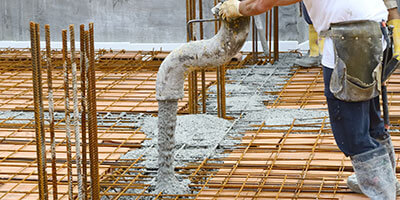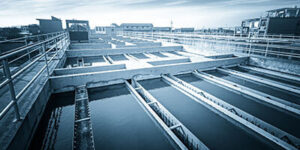MAGNESIA CEMENTS
Dr. Mark A. Shand
Premier Magnesia
Sorel in 1867 announced the discovery of an excellent cement formed from the combination of magnesium oxide and magnesium chloride solution. This cement type is known by many different names, such as Sorel, magnesite and magnesium oxychloride cement. This cement has many superior properties to Portland cement. However, there are two other known magnesia cements. The first is magnesium oxysulfate (MOS), which is the sulfate analogue of magnesium oxychloride and is formed by the combination of magnesium oxide and magnesium sulfate solution. The second is magnesium phosphate cement (MAP), formed by the reaction between magnesium oxide and a soluble phosphate, such as ammonium phosphate monobasic (NH4H2PO4)
Magnesium Oxychloride Cement
As mentioned above, magnesium oxychloride has many superior properties compared to Portland cement. It does not need wet curing, has high fire resistance, low thermal conductivity, good resistance to abrasion. It also has high transverse and crushing strengths, 7,000-10,000 psi are not uncommon. Magnesium oxychloride also bonds very well to a variety of inorganic and organic aggregates, such as, saw dust, wood flour, marble flour, sand and gravel, giving a cement that has high early strength, insectcidal properties, resilient, conducting and is unaffected by oil, grease and paints.
The major commercial applications of magnesium oxychloride cement, are industrial flooring, fire protection, grinding wheels, and because of it’s resemblance to marble, have been used for rendering wall insulation panels and for stuccos.
The main bonding phases found in hardened cement pastes are Mg(OH)2, 3Mg(OH)2 .MgCl2 .8H2O (3-form) and 5Mg(OH)2.MgCl2 .8H2O (5-form). 5-form is the phase with superior mechanical properties and is formed using a molar ratio of MgO:MgCl2:H2O = 5:1:13 with a slight excess of MgO and the amount of water as close as possible to theoretical required for formation of the 5-form and hydration of the excess MgO to form Mg(OH)2.
The reactivity of the MgO influence reaction rates and products, thus affecting the development of strengths. The magnesium oxide should conform to certain requirements of chemical and physical properties. Conditions of calcination, particle size and active lime content must be carefully controlled. Oxymag is a Premier Magnesia magnesium oxide which conforms to the above requirements and is specially produced for making Sorel cements. Magnesium chloride is generally applied as a 22o Be solution and should have a maximum of 0.5% calcium chloride and 1.0% total alkali chlorides. The minimum amount of gauging solution to yield a plastic mix of satisfactory workability should be used.
The main reason why magnesium oxychloride cement has not remained popular in the building industry is that the magnesium oxychloride phase is not stable in prolonged contact with water, and will result in the leaching of magnesium chloride. Various additives have been added to MOC cements to try and combat this problem of water resistance, with varying degrees of success. Over a period of time, atmospheric carbon dioxide will react with magnesium oxychloride to form a surface layer of Mg2(OH)ClCO3.3H2O. This layer serves to slow the leaching process. Eventually additional leaching results in the formation of hydromagnesite, 4MgO.3CO3.4H2O, which is insoluble and enables the cement to maintain structural integrity
MAGNESIUM OXYSULFATE CEMENTS
Magnesium oxysulfates (MOS) are formulated by the reaction between magnesium oxide and magnesium sulfate solution, and like that of magnesium oxychloride has very good binding properties. The resistance of MOS cements to abrasion is about 1.5 times that of Portland cement, but only 50% that of MOC cement. Its compressive and transverse strengths are superior to Portland cement but not as good as MOC cement. Four oxysulfate phases are formed at temperatures between 30 and 120oC; 5Mg(OH)2.MgSO4.3H2O (5-form), 3Mg(OH)2.MgSO4.8H2O (3-form), Mg(OH2.MgSO4.5H2O, and Mg(OH)2.2MgSO4.3H2O. Only the 3-form is stable below 35oC.
The major use of MOS cement is in the manufacture of lightweight insulating panels. MOS cement suffers from the same lack of water resistance as do MOC cements.
MAGNESIUM PHOSPHATE CEMENTS
Magnesium phosphate cements are formed by the reaction of magnesium oxide with a soluble phosphate, such as ammonium phosphate, either the mono or dibasic salt; or an agricultural fertilizer solution known as 10-34-0 (NPK designation) can also be used. This magnesia cements rapid set and very high early strength has found utility as a rapid patching mortar for road and aircraft run-ways, which can typically be re-opened after about 45 minutes. It has very good adhesion to a wide variety of aggregates and substrates. In contrast to MOC and MOS cements, this cement system has good water and freeze thaw resistance. Commercial magnesium phosphate cements typically reach a compressive strength of about 2900 psi after 1 hour, with an ultimate strength of 8000 psi.
The reaction mechanism is thought to be an acid-base reaction between the MgO and the acid phosphate. This results in an initial gel formation followed by the crystallization of this gel into an insoluble phosphate, mainly magnesium ammonium phosphate hexahydrate, NH4MgPO4.6H2O. The magnesium oxide used in this system is a fairly unreactive MgO, either hard or dead-burnt, and is used in conjunction with a set retarder, typically either borax or boric acid, to afford a workable set time.






